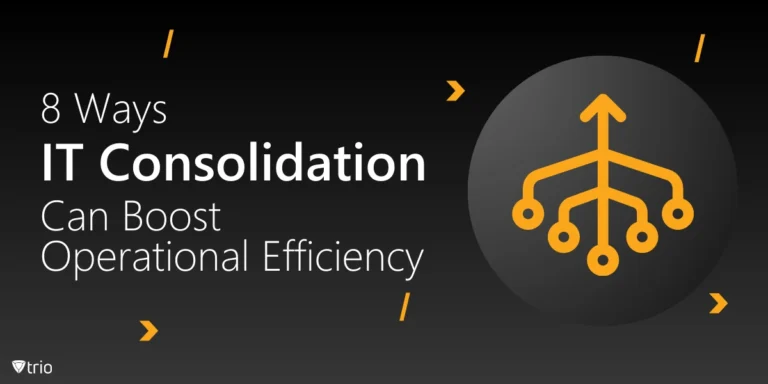In today’s digital age, data is the lifeblood of any organization. Whether it’s sensitive customer information, financial records, or intellectual property, ensuring that this data is protected and recoverable is paramount. Framework IT reports that “According to the National Cybersecurity Alliance, 60 percent of small businesses that experience significant data loss are forced to close within six months of the disaster.” Data backup and recovery policies are structured guidelines that help organizations safeguard their data against loss due to system failures, cyberattacks, or natural disasters. Implementing a robust data backup and recovery policy is not just a best practice but a critical component of an organization’s overall security strategy.
A comprehensive data backup and recovery policy outlines the procedures for regularly backing up data and the steps to restore it in case of a loss. These policies typically include details on the types of data to be backed up, the frequency of backups, the storage locations for backup data, and the protocols for testing and validating backup systems. By having such a policy in place, organizations can minimize downtime, ensure business continuity, and protect themselves from the severe consequences of data breaches or data loss incidents.
Key Components of Effective Data Backup and Recovery Policies
An effective data protection strategy and recovery policy comprises several key components that work together to ensure data integrity and availability. Firstly, data classification is essential to determine the level of protection required for different types of data. Critical and sensitive data must be prioritized and handled with stricter backup protocols compared to less critical data. Next, defining the backup frequency and type, whether full, incremental, or differential, is crucial for balancing storage efficiency and recovery speed.
Another critical component is the retention period for backups, which dictates how long backup data should be kept before it is safely disposed of. This is especially important for compliance with legal and regulatory requirements. Additionally, regular testing of backup and recovery procedures is necessary to verify that data can be restored effectively. By incorporating these components into their data security strategy, organizations can create a resilient framework that ensures data is always available when needed, minimizing the impact of data loss events.
Integrating Mobile Device Management (MDM) Solutions
As the workforce becomes increasingly mobile, managing and securing data across various devices is a growing challenge. Mobile Device Management (MDM) solutions play a crucial role in supporting data backup and recovery policies. MDM solutions enable IT administrators to monitor, manage, and secure mobile devices such as smartphones, tablets, and laptops that access corporate data. These solutions ensure that data on mobile devices is regularly backed up and can be remotely wiped or restored if a device is lost or compromised.
Integrating Trio, our Mobile Device Management solution into your data backup and recovery policy helps maintain data integrity and security across all endpoints. With Trio, organizations can enforce data encryption, ensure compliance with backup policies, and provide a seamless way to restore data to new devices. This level of control and security is essential in preventing data breaches and ensuring that critical information is always recoverable, regardless of the device used to access it. Try out Trio’s free demo to understand its features and benefits for yourself.
The Benefits of a Comprehensive Backup Strategy
Implementing a comprehensive data backup and recovery strategy offers numerous benefits beyond just data protection. Firstly, it enhances business continuity by ensuring that operations can quickly resume after a data loss event. This is vital for maintaining customer trust and minimizing financial losses. Secondly, a robust backup strategy helps organizations comply with industry regulations and standards, avoiding potential legal and financial penalties.
Moreover, a well-defined backup and recovery policy can improve operational efficiency. By automating backup processes and regularly testing recovery procedures, organizations can reduce the time and effort required to manage data backups manually. This frees up IT resources to focus on more strategic initiatives. Ultimately, a comprehensive backup strategy provides peace of mind, knowing that your organization’s data is protected and can be quickly restored in any situation.
Free Data Backup and Recovery Policy Template
In conclusion, the importance of a disaster recovery plan and a data backup policies cannot be overstated. It ensures that critical data is safeguarded and can be restored promptly in case of any unforeseen events. By integrating Mobile Device Management solutions, organizations can extend their backup and recovery policies to cover all devices, enhancing overall data security.
To help you get started, we have created a comprehensive Data Backup and Recovery Policy Template that you can customize to suit your organization’s needs. This template includes all the essential components and guidelines to establish a robust data protection framework.
See Trio in Action: Get Your Free Trial Now!
Download our free Data Backup and Recovery Policy Template and ensure your organization’s data is always protected and recoverable.
![Data Backup and Recovery Policy Template [And Key Benefits]](https://www.trio.so/blog/wp-content/uploads/2024/06/Data-Backup-and-Recovery-Policy-Template.webp)



